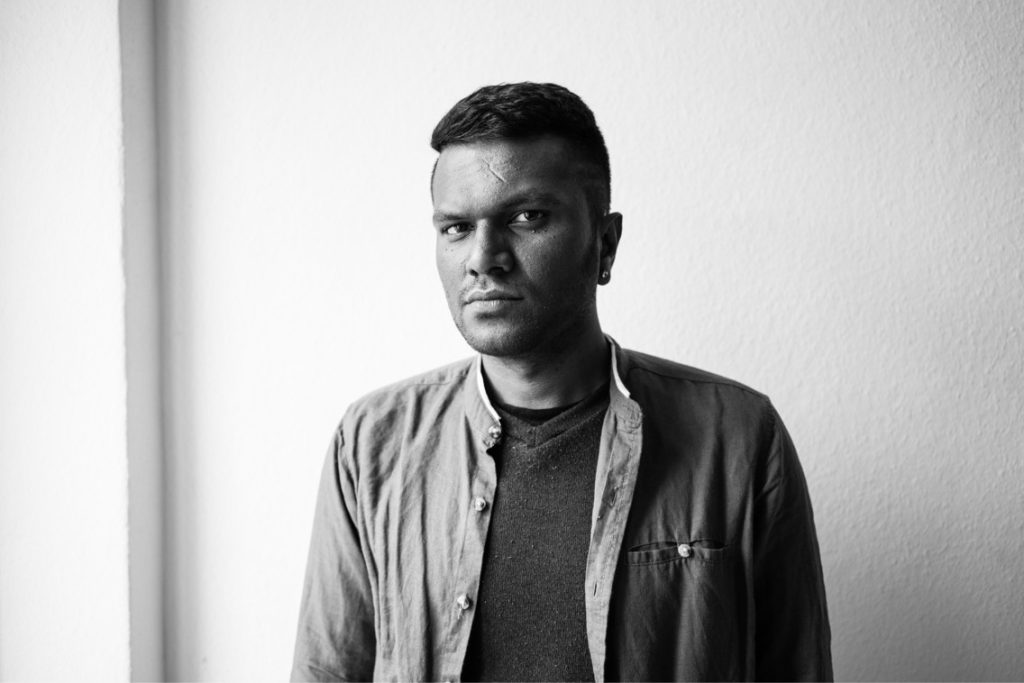Who is Artist Sajan Mani?
Born in Kunnoth, India, in 1982, Sajan Vazhakaparambil Kolavan Kalyanikutty Mani is a contemporary artist residing in Berlin. He primarily works with video installations, performance art, and drawing. Sajan earned his degree in English literature in 2004 from Kannur University. Later, in 2011, he received his fine arts degree from Karnataka State Open University. In 2019, he graduated from Weißensee Academy of Art, Berlin with a master’s degree in spatial strategies.
Sajan Mani’s oeuvre is extensive with the theme of oppression surrounding it. He served on the editorial board of the Kochi-Muziris Biennale‘s inaugural edition. He has showcased his artworks in Vancouver, Dhaka, Goa, Berlin, and Kolkata, to name a few. In 2024, Sajan Mani won Germany’s oldest art award – the Villa Romana Prize. He is also the first Indian to receive the Berlin Art Prize in 2021. He is represented by NOME Gallery in Berlin and the Shrine Empire in India.
Sajan Mani’s Art Style
Sajan Mani’s artworks focus on post-colonial Dalit lives and the diverse lives of India’s marginalized people. Born into a family of rubber tappers in a secluded village, he uses his “Black Dalit body,” to address the intersectional concerns of India’s oppressed and marginalized populations. Mani’s approach to performance demands an embodied presence that faces hurt, guilt, fear, and authority. His experimentation with his body as a site of intersection between the past and present sheds light on the body as a socio-political metaphor that touches on subjects like racial profiling, slavery, and caste.
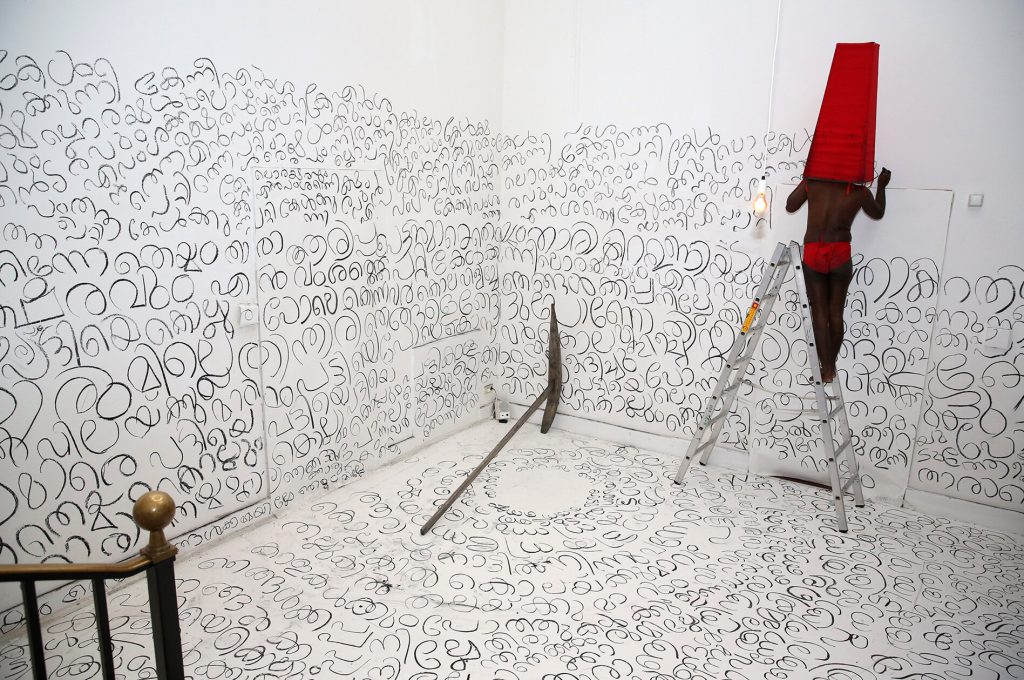
Sajan Mani’s Artworks
Some of Sajan Mani’s important artworks include ‘Citizen Ship Burn It Down!,’ ‘Liquidity Ar,’ ‘Secular Meat,’ ‘Caste-pital,’ ‘Politically Incorrect Bodies,’ ‘Specters of Communism, Art will Never Die,’ ‘but COW?,’ and ‘Alphabet of Touch> <Over Stretched Bodies and Muted Howls for Songs.’ Let’s talk about how he uses his body as a tool for gory nostalgia and the horrors of the past, all the while inciting a much-needed social change.
1. Alphabet of Touch> <Over Stretched Bodies and Muted Howls for Songs
The ‘muted howls,’ in this exhibition alludes to Sajan Mani’s translation of Dalit activist and poet Poykayil Appachan’s (1879–1939) protest songs. Born into the lowest caste of ‘untouchables’ or Dalits, Appachan was raised as a slave and went on to become a social reformer. Sajan’s energetic two-day show blends emotive renditions of the original Malayalam songs with a focus on physical space. Sajan’s moving philosophy takes place in the liminal space between individual and collective histories. It explores themes such as spirituality, appropriation, racism, casteism, touch and untouchability.
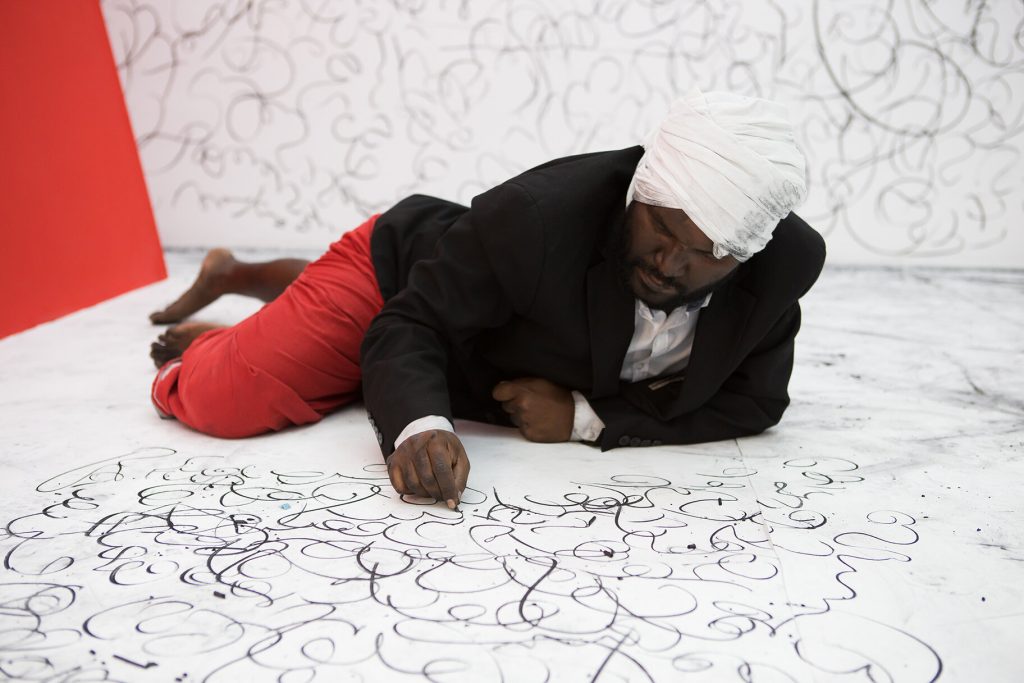
2. Expedition Mani – Reverberations
Expedition Mani – Reverberations is a show by Sajan Mani displayed at NOME Berlin. Mani had been looking through Western image archives for signs of his ancestors. It included a large collection of images taken in the South Indian Malabar region during the colonial era. Imaginary conversations with his ancestors are sparked by Mani’s performance, which activates installations, videos, and drawings. The popular art form of Kerala — Gulikan Theyyam served as the inspiration. In this ceremony, the lower castes are transformed into gods.

Mani challenges the hegemonic narratives of Western archives. The performative procession began at the Gate of Sanchi at Schlossplatz, Berlin, travelling through Potsdamer Platz, and ending at NOME Berlin, where he opened the exhibition with Theyyam’s ritualized dances and chants. He put up a neon sign at the entrance of the exhibition space that read ‘Colonial Copyright (2024)’ and featured a crossed C. The exhibit transforms into a space that echoes the resurrection of his ancestors’ narratives, complete with vibrant drawings of hybrid humans and non-human species against a backdrop of Malabar-region magazines.
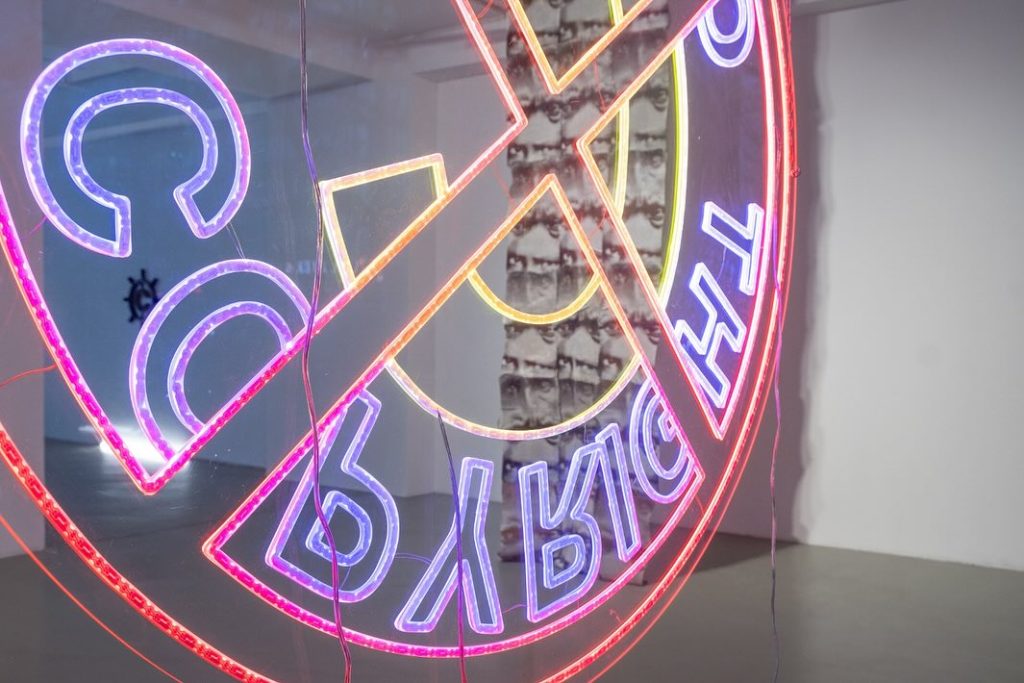
3. Secular Meat
In Secular Meat, Sajan Mani brings together two bodies, three colours, five grilled chicken pieces, and 200 eggs. He uses the white broiler chicken as the subject of mass production and as a symbol of ‘secular’ meat for this performance. To him, these are the perverted notions of the Brahminical society, propagating the caste system. Mani bases his performances on the creation of knowledge and caste politics, drawing inspiration from visual encyclopedias, historical police reports, and contemporary media representations. It calls into question how food affects the identity and relationship of the body.
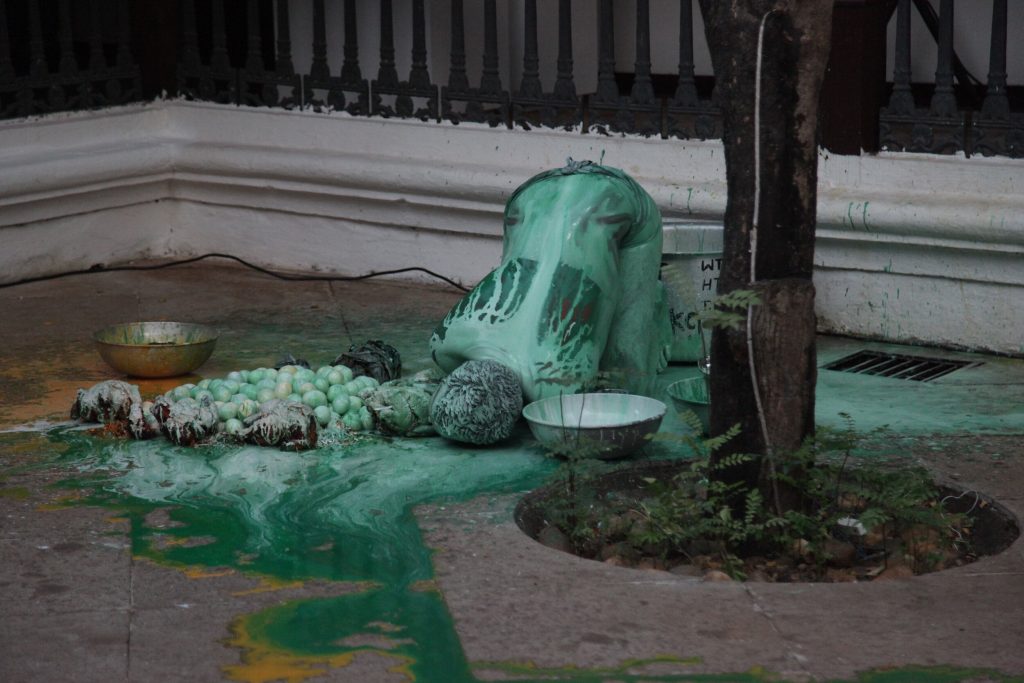
He has a greenish-blue colour painted on his body and hair, and he is dressed in loincloths. A half-dozen chickens are positioned around a mound of eggs that have been dipped in green dye. There are three white eggs at the top. He looks at the chicken and eggs, strokes his face and neck with a white egg, gets into a tiny tin tub, and submerges himself in water. Then he climbs out and rubs his forearm with another white egg. Seemingly, he is wondering if his skin has turned white. Even though it hasn’t occurred, he keeps washing until there is no more paint left.
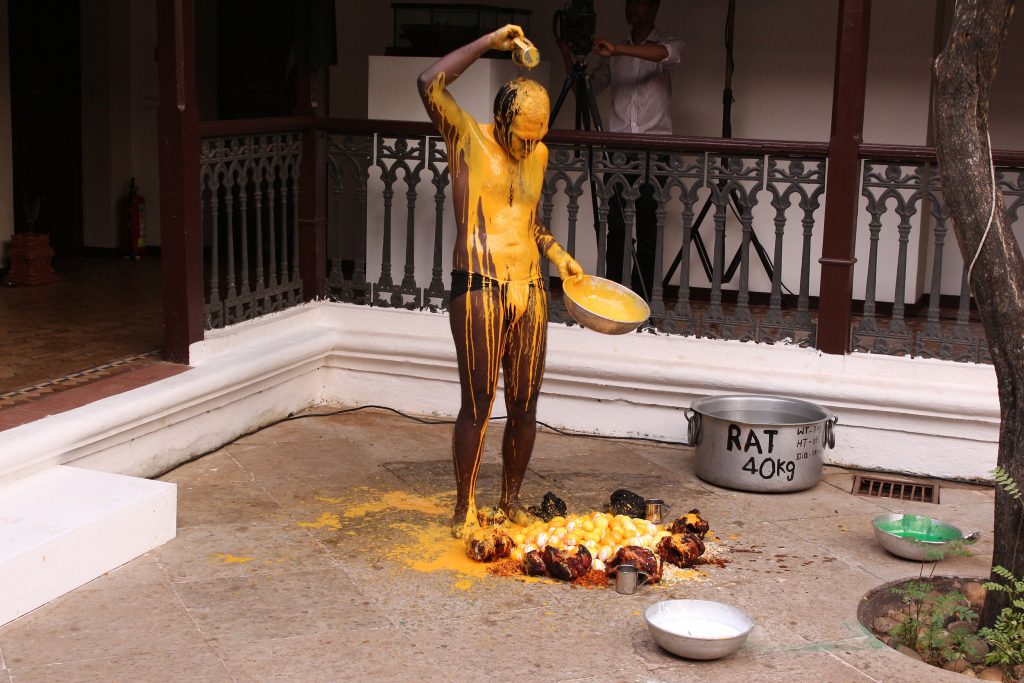
4. Citizen Ship Burn It Down!
On 17th September, Sajan Mani travelled 5 km from the Roundhouse Community Center to Stanley Park by way of the sea wall. Along with the locals, he created 376 black paper boats that covered his black dress and mask. Sajan finished his performance by laying down on a rock in the ocean as a sacrifice to the water as night fell.
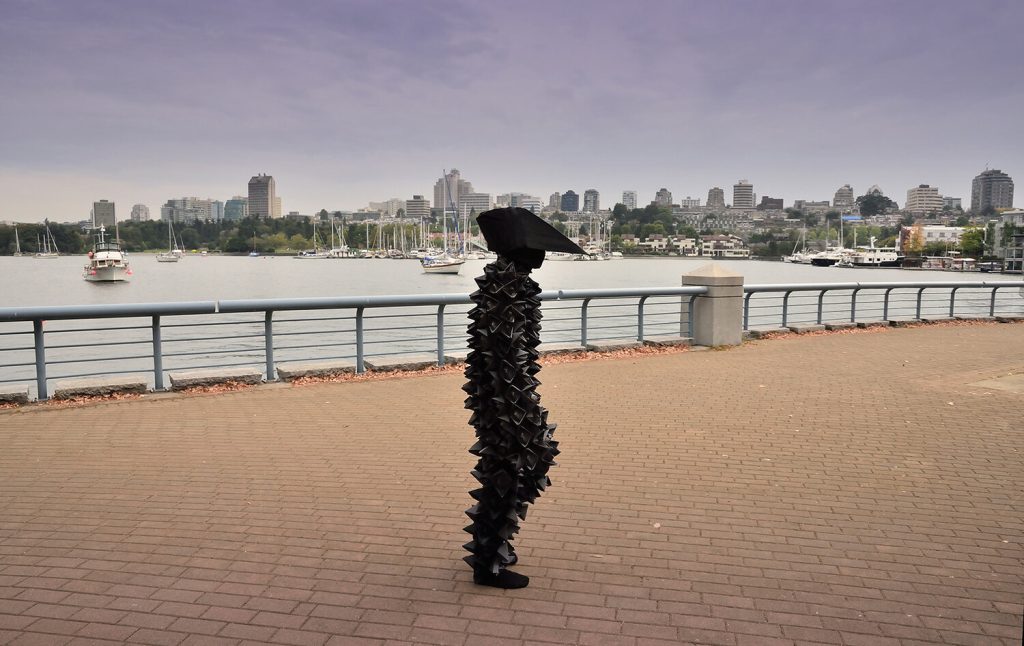
The reference for this exhibition is ‘The KomagataMaru,’ a Japanese steamship that sailed from China to Vancouver in 1914, mentioned in the paper boats. 12 Hindus, 24 Muslims, and 340 Sikhs were forced to return to India when the boat was turned away. It addressed the early 20th-century laws that prohibited immigration from countries with Asian ancestry.

Image Courtesy – India Art Fair

Hi Ya’ll !!
I love writing about pop culture and all things queer.
Sub Editor at Abir Pothi

